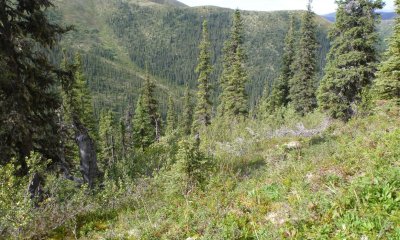
Boreal Woodland Gravelly Alkaline Slopes
Circle-spoke model
Scenario model
Current ecosystem state
Select a state
Management practices/drivers
Select a transition or restoration pathway
-
No transition or restoration pathway between the selected states has been described
Target ecosystem state
Select a state
Description
The reference plant community is needleleaf woodland (Viereck et al. 1992) with the dominant tree being white spruce. There are five plant communities within the reference state related to fire. While the reference plant community, community 1.3, and community 1.5 are supported with plot data, plant communities 1.2 and 1.4 have limited data and are considered provisional concepts.
Submodel
States 1, 5 and 2 (additional transitions)
1.1. white spruce / bog Labrador tea - eightpetal mountain-avens / Altai fescue - northern singlespike sedge
1.5. fireweed / Ceratodon moss - juniper polytrichum moss.
1.2. late stage of fire induced secondary succession
Model keys
Briefcase
Add ecological sites and Major Land Resource Areas to your briefcase by clicking on the briefcase (![]() ) icon wherever it occurs. Drag and drop items to reorder. Cookies are used to store briefcase items between browsing sessions. Because of this, the number of items that can be added to your briefcase is limited, and briefcase items added on one device and browser cannot be accessed from another device or browser. Users who do not wish to place cookies on their devices should not use the briefcase tool. Briefcase cookies serve no other purpose than described here and are deleted whenever browsing history is cleared.
) icon wherever it occurs. Drag and drop items to reorder. Cookies are used to store briefcase items between browsing sessions. Because of this, the number of items that can be added to your briefcase is limited, and briefcase items added on one device and browser cannot be accessed from another device or browser. Users who do not wish to place cookies on their devices should not use the briefcase tool. Briefcase cookies serve no other purpose than described here and are deleted whenever browsing history is cleared.
Ecological sites
Major Land Resource Areas
The Ecosystem Dynamics Interpretive Tool is an information system framework developed by the USDA-ARS Jornada Experimental Range, USDA Natural Resources Conservation Service, and New Mexico State University.
